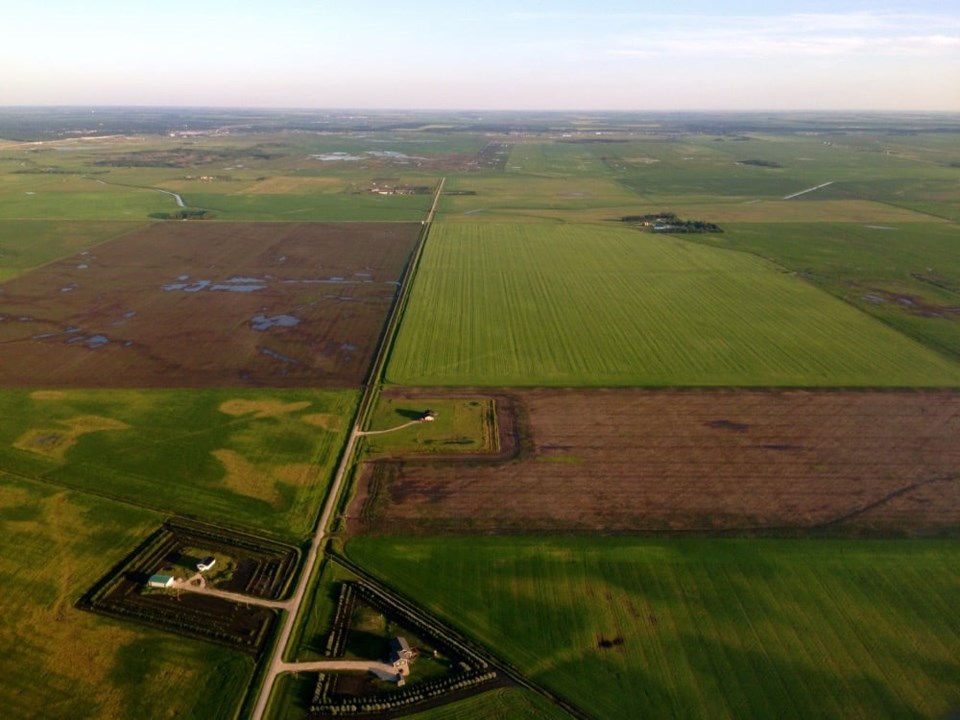Impacted by lower interest rates in 2020 to early 2022, and investors looking for safety and better yields, the increase in farmland values in western Canada has been nothing short of spectacular.
The value per acre of farmland in Canada has skyrocketed by 334 per cent since 2001, but most of the increases have occurred within the last few years.
Since 2016, the increase has been 213 per cent. The average acre in Canada is now worth almost $3,800, compared to $862 back in 2001, according to Statistics Canada. The value of an acre of farmland in Saskatchewan has increased by 391 per cent since 2001, the highest in the country. The highest increase since 2016 is in Manitoba, by 266 per cent. Depending on what is produced, some farmland valuations have increased more than others due to a variety of factors such as location, soil quality, and potential revenues.
In contrast, since 2016, the average farm real estate value in the United States has increased by 27 per cent, according to the latest report from the United States Department of Agriculture. But an acre of farmland on average in the U.S. is now worth about US$3,800, so Canada has somewhat caught up to the U.S. in recent years.
What is pushing farmland values higher in Canada is a series of economic forces. The list includes high prices for commodity crops, a robust housing market, an extended period where interest rates were extremely low until recently, and a profusion of government subsidies supporting certain sectors. Compensation linked to trade agreements, which exceeded $5 billion, given to supply-managed sectors like dairy, poultry, and eggs has overcapitalized many farm operations out there, compelling many to buy land. That’s a problem few are talking about.
In Canada, barely 7 per cent of all our land is devoted to agriculture. It’s not a lot, and that amount of land where farming occurs is shrinking. In 2011, 166 million acres of land were devoted to farming to support over 245,000 farms. Today, this amount is about 150 million acres for about 188,000 farms. Farms are bigger, more resourceful, and more efficient.
Yes, farmland in Canada is getting more expensive, but farmers in Canada are also making more money.
Again, according to Statistics Canada, cash receipts were a little over $36 billion in 2001. In 2021, that amount exceeded $83 billion, a record, and 2022 was likely to be another record year. Last year was also a record year for agri-food exports; if you’re a hedge fund or an investor, these numbers will catch your attention, and they have. There are fewer barriers, including the end of the Wheat Board’s single desk on wheat and barley, that have brought a slew of new possibilities for the farming community.
Partnering with investors
As a result, we have seen more farmers renting land instead of owning. Close to 50 per cent of farmers in Canada now rent land in lieu of owning. Some may see this as a threat to normal ways of producing food and supporting agriculture, but it’s not necessarily a terrible strategy. In fact, the largest farmland owner in the country is not even a farmer at all.
Robert Andjelic has bought more than 225,500 acres of land, a portfolio worth somewhere between $500 and $700 million. At the root of this investor’s move into agriculture is the will to produce more food and address our global food security crunch. Along with his capital, his team brought knowledge in sound soil management practices, helping over 250 farmer-tenants who benefit from such expertise. Andjelic’s job is to make sure his tenants make money. Otherwise, he’s not getting paid – simple as that. This is a new way of thinking that can make Canadian agriculture more profitable.
Canada’s agri-food potential is immense, and farmland has always been a good investment. A growing number of groups and investors who do understand how to make capital work are making a difference. The intent of investors from outside the agriculture sector is to make our agriculture stronger. Farmers who have been in the system for decades, even generations, have a lot to offer and still do. But producing and investing at the same time is getting harder, which is slowly getting agricultural pundits to specialize. Capital markets and the investment community around the world have changed dramatically in just the last five years. This is why more than half of younger farmers in Canada are leasing land now in order to operate.
The correlation between land prices, rental rates, and farm revenues is quite strong. All three tend to move synchronously higher over time, according to a report from Farm Credit Canada last year. With more specialization, everyone wins. Younger farmers also see value in renting and partnering with investors.
It’s just a different way of seeing farming.
– Sylvain Charlebois is professor of food distribution and policy at Dalhousie University, and senior director of the Agri-Food Analytics Laboratory.



